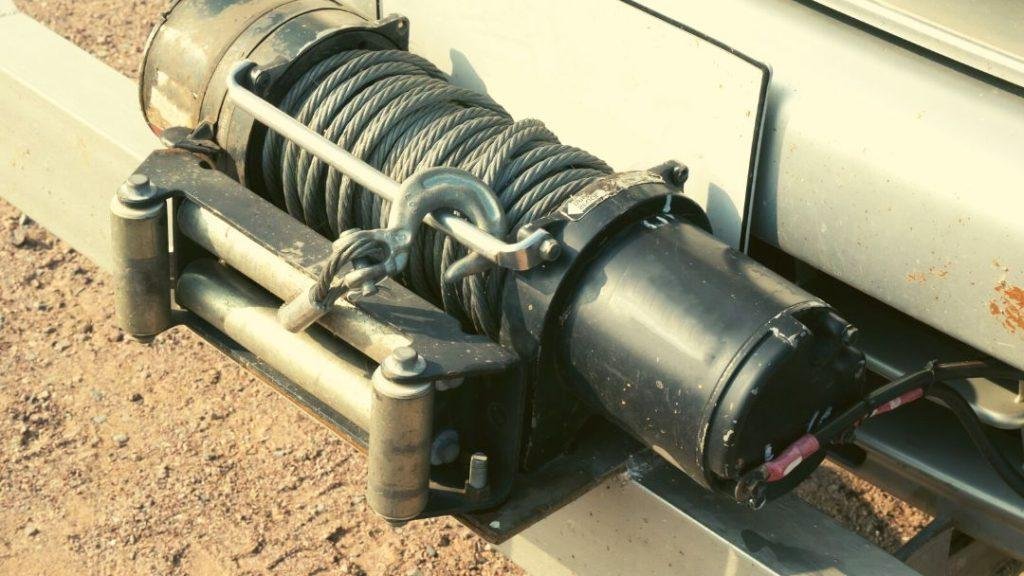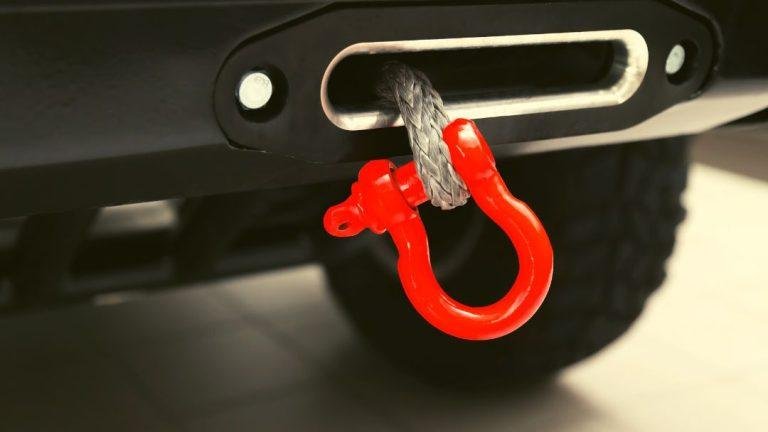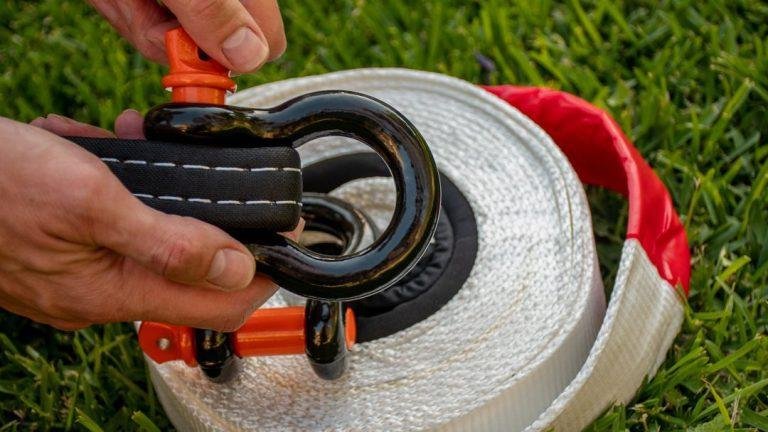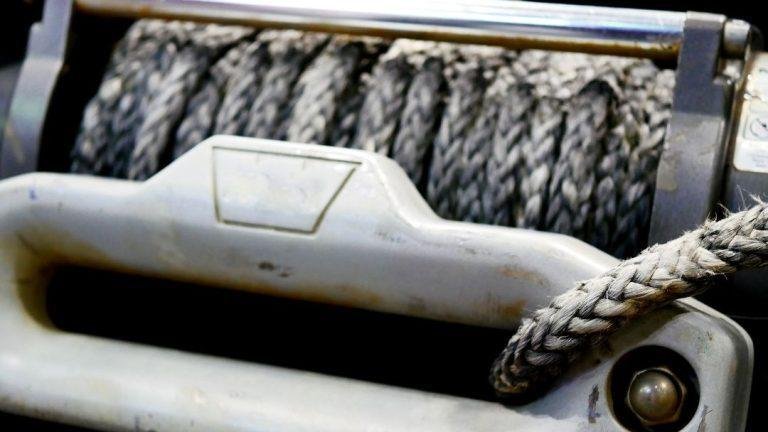Yes, a winch can be used as a hoist, as both serve the same purpose of lifting and pulling heavy objects. A winch is a mechanical device with a spool and a cable or rope that can be used to lift and lower loads vertically, similar to a hoist.
It is commonly used in off-road vehicles, trailers, and boats, but can also be used for industrial, construction, and recreational purposes. With its ability to provide mechanical advantage and control, a winch can safely and efficiently lift heavy weights.
Understanding The Differences Between A Winch And A Hoist
Understanding the differences between a winch and a hoist can help clarify if a winch can be used as a hoist. Although both devices are similar in functionality, a winch is specifically designed for pulling, while a hoist is intended for lifting heavy objects vertically.
Therefore, while a winch might have the capability to lift certain items, it may not be as efficient or safe as using a dedicated hoist for that purpose.
Have you ever wondered if a winch can be used as a hoist, or what sets these two devices apart? While they share some similarities, it’s crucial to understand their differences to determine their purpose and capabilities accurately. In this section, we’ll explore the distinctions between winches and hoists, helping you understand which one is best suited for your specific needs.
Brief Overview Of What A Winch And A Hoist Are:
- A winch is a mechanical device commonly used to pull or tow heavy objects horizontally. It consists of a cable or rope wound around a drum, driven by a motor, and often includes a gear system for added pulling power.
- A hoist, on the other hand, is designed to lift and lower objects vertically. It typically features a pulley system or chain block with a hook or other lifting attachment, allowing for controlled and precise vertical movements.
Key Differences Between A Winch And A Hoist:
- Direction of force:
- Winches are predominantly used for horizontal pulling or towing.
- Hoists are primarily designed for vertical lifting and lowering.
- Mechanical design:
- Winches typically feature a rotating drum or spool where the cable or rope is wound.
- Hoists employ pulleys or a chain block system to lift and lower objects.
- Weight carrying capacity:
- Winches are typically built to handle heavier loads than hoists, as they are designed to pull objects horizontally against resistance.
- Hoists are typically designed for lifting loads vertically and are available in various weight capacities.
- Control and precision:
- Winches prioritize raw pulling power and may lack the fine control necessary for precise vertical movements.
- Hoists offer precise control over lifting and lowering movements, making them ideal for tasks requiring accuracy.
Importance Of Knowing The Purpose And Capabilities Of Each:
Understanding the purpose and capabilities of winches and hoists is crucial for several reasons:
- Safety: Using the right device for the task at hand ensures the safety of both operators and the load being handled.
- Efficiency: Utilizing the appropriate equipment improves efficiency and productivity, preventing unnecessary delays or accidents.
- Preventing damage: Choosing the correct device helps avoid damage to both the equipment and the load, minimizing the risk of costly repairs or replacements.
- Cost-effectiveness: By selecting the right tool for the job, you can optimize resources and avoid unnecessary expenses.
While winches and hoists may seem similar at first glance, their intended applications and functionalities differ significantly. Understanding these differences is essential in selecting the appropriate device for your specific lifting or pulling needs.

Exploring The Capabilities Of A Winch As A Hoist
A winch can be effectively used as a hoist, showcasing its versatile capabilities in vertical lifting operations. With its sturdy construction and reliable power, a winch offers a practical solution for various lifting tasks, making it a valuable tool in different industries.
When it comes to lifting heavy objects, a winch is a versatile tool that can come in quite handy. While its primary function is to pull or tow loads horizontally, many people wonder if a winch can also be used as a hoist for vertical lifting.
In this section, we will delve deeper into this topic and discuss the power potential of a winch, analyze the load capacity and lifting capabilities of different winch models, and examine their suitability for specific lifting applications.
Discussing The Power Potential Of A Winch
- Winches are designed with impressive power potential, capable of generating substantial pulling force to move heavy loads.
- The power of a winch is typically measured by its rated capacity, which determines the maximum weight it can handle.
- Electric winches are often preferred due to their ability to deliver consistent power and torque, making them suitable for both pulling and lifting applications.
- Hydraulic winches, on the other hand, can offer even greater power but are generally more expensive and require additional equipment.
Analyzing The Load Capacity And Lifting Capabilities Of Different Winch Models
- Winches vary in their load capacity, and it is essential to choose the right model for your lifting needs.
- Smaller winches with capacities ranging from 1,500 to 3,500 pounds are suitable for lighter loads such as recreational vehicles, boats, or small equipment.
- Medium-duty winches, with capacities between 4,000 and 9,500 pounds, are commonly used for trucks, suvs, and larger equipment.
- Heavy-duty winches, with capacities exceeding 10,000 pounds, are primarily utilized in industrial or commercial settings for lifting significantly larger loads.
- It is crucial to match the winch’s load capacity to the weight of the load you intend to lift to ensure safe and efficient operation.
Examining The Suitability Of A Winch For Specific Lifting Applications
- While a winch can be used as a hoist, its suitability for specific lifting applications depends on several factors.
- Winches are commonly employed in situations where vertical lifting is required, such as lifting heavy objects onto a truck bed or removing fallen trees from a trail.
- They are not typically recommended for continuous vertical lifting or prolonged suspended loads, as they are predominantly designed for intermittent use.
- It is crucial to consider the setup and rigging requirements, as using the appropriate lifting accessories and ensuring proper attachment points is essential for safe and effective lifting operations.
- When using a winch as a hoist, it is important to follow the manufacturer’s guidelines and safety precautions to avoid accidents or damage to the equipment.
Now that we have explored the power potential of a winch, analyzed different winch models’ load capacity and lifting capabilities, and examined their suitability for specific lifting applications, you can make an informed decision on whether a winch can be used as a hoist for your particular lifting needs.
Remember to always prioritize safety and adhere to the recommended guidelines for a successful and secure lifting operation.
Factors To Consider When Using A Winch As A Hoist
When using a winch as a hoist, there are important factors to consider. These include the weight capacity, safety features, compatibility with the load, and proper installation. It’s crucial to assess these factors to ensure the winch can safely and effectively function as a hoist.
Understanding The Limitations Of A Winch For Lifting Purposes:
- Winches are primarily designed for pulling and towing heavy loads horizontally, rather than lifting them vertically.
- The construction and mechanism of a winch may not be suitable for lifting heavy objects safely and efficiently.
- The load capacity of a winch is typically lower than that of a dedicated hoist, limiting its ability to lift heavy loads.
- Winches may lack features such as load brakes or overload protection, which are crucial for safe vertical lifting operations.
Taking Into Account The Safety Concerns And Precautions:
- Lifting with a winch involves potential risks, and it’s essential to consider safety precautions.
- Ensure that the winch is in good working condition, regularly inspected, and properly maintained.
- Use appropriate attachments and rigging equipment specifically designed for lifting purposes.
- Ensure that the load is adequately secured and balanced to prevent accidents or damage.
- Always follow the manufacturer’s instructions and recommended weight limits to avoid overloading the winch and risking equipment failure.
Evaluating The Environmental Conditions That May Affect The Performance Of A Winch As A Hoist:
- Environmental factors can significantly impact the performance and safety of using a winch as a hoist.
- Extreme temperatures can affect the winch’s components and reduce its lifting capacity.
- Moisture and exposure to water can cause corrosion and damage to the winch, compromising its performance.
- Consider the presence of obstacles or uneven terrain that may hinder the smooth operation of the winch during lifting.
- Wind or other weather conditions can create additional challenges and impact the stability and safety of the lifting operation.
Remember, while using a winch as a hoist may offer some convenience, it is vital to recognize its limitations and prioritize safety. Always assess the suitability of a winch for your lifting needs and consult professional advice if required.
Tips And Techniques For Using A Winch As A Hoist
Discover useful tips and techniques for utilizing a winch as a hoist to lift heavy loads. Learn how to safely and effectively use a winch as a versatile lifting tool.
Winches are extremely versatile tools that are primarily used for pulling or lifting heavy loads. While their main purpose is pulling, they can also be used as a hoist in certain situations. Whether you are a seasoned professional or a diy enthusiast, knowing how to use a winch as a hoist can come in handy.
Follow these step-by-step instructions to ensure a safe and efficient operation:
- Step 1: Choose the right winch capacity:
- Determine the weight of the load you need to lift and make sure the winch you are using has a sufficient capacity to handle that weight.
- Consider any additional factors such as the incline or distance you need to lift the load, as these can affect the winch’s lifting capacity.
- Always consult the winch manufacturer’s specifications and guidelines to ensure compatibility and safety.
- Step 2: Attach the load securely:
- Before attaching the load, ensure that the winch and its mounting point are properly secured, and that the winch cable is in good condition.
- Use appropriate rigging equipment, such as shackles or hooks, to securely attach the load to the winch cable.
- Double-check the attachment points to ensure they are strong enough to withstand the lifting force.
- Step 3: Perform a test run:
- Before lifting the load, conduct a test run to ensure that the winch is functioning properly and the load is attached securely.
- Make sure the winch motor and controls are in good working condition.
- Gradually apply tension to the winch cable and monitor any signs of overload or instability.
- Step 4: Lift the load safely:
- Start by slowly activating the winch and lifting the load a few inches off the ground.
- Monitor the load and winch operation carefully throughout the lifting process.
- Avoid sudden movements or jerks that could cause the load to swing or shift.
- Step 5: Lower the load with control:
- To lower the load, release the winch tension slowly and under control.
- Avoid sudden or uncontrolled lowering, as this can lead to accidents or damage to the load.
- Use the winch controls to maintain a steady and controlled descent.
Exploring The Best Practices For Attaching And Securing The Load
Proper attachment and securement of the load are crucial aspects when using a winch as a hoist. Follow these best practices to ensure the load remains securely attached throughout the lifting process:
- Inspect the load and attachment points thoroughly before lifting to identify any weak spots or potential hazards.
- Use appropriate rigging equipment that is rated for the load weight and ensure it is in good working condition.
- Avoid attaching the load to any part of the vehicle or structure that is not designed for lifting purposes.
- Double-check the attachment points and ensure they are properly connected and secured.
- Consider using additional support, such as lifting straps or slings, for improved load stability.
- Regularly inspect the rigging equipment for wear, damage, or corrosion, and replace if necessary.
- Use a safety latch or locking mechanism on hooks to prevent accidental release.
- Follow any specific guidelines or recommendations provided by the winch manufacturer for attaching and securing the load.
Highlighting The Importance Of Regular Maintenance And Inspections
To ensure the longevity and continued safety of your winch-as-hoist setup, regular maintenance and inspections are crucial. Keep the following points in mind:
- Perform routine inspections of the winch, cable, and rigging equipment to identify any signs of wear, damage, or corrosion.
- Clean and lubricate the winch and its components regularly to prevent rust and ensure smooth operation.
- Check the winch motor, controls, and electrical connections for any issues or malfunctions.
- Look for any fraying, kinks, or broken strands in the winch cable and replace it immediately if it shows signs of damage.
- Store the winch and rigging equipment properly when not in use to protect them from the elements and potential damage.
- Follow the manufacturer’s recommendations for maintenance procedures and intervals.
Remember, when using a winch as a hoist, safety should be your top priority. Always follow the manufacturer’s guidelines and ensure proper training and equipment. Properly attaching and securing the load, as well as regular maintenance and inspections, will contribute to a safe and efficient lifting operation.
Real-Life Examples And Case Studies
Discover real-life examples and case studies showcasing the practicality of using a winch as a hoist. Explore how individuals and industries have utilized winches effectively for lifting and moving heavy loads, providing insights into the versatility and functionality of this equipment.
Showcasing Actual Scenarios Where A Winch Has Been Successfully Used As A Hoist
- Use of winch as a hoist in construction industry: In several construction projects, winches have proven to be invaluable in lifting heavy loads and materials. For example, when constructing tall buildings, winches have been utilized to transport construction materials and equipment to higher floors, eliminating the need for manual lifting and reducing the risk of accidents.
- Winch hoisting in the automotive sector: Winches are also extensively used in the automotive industry. In auto repair shops, winches are employed to lift engines and other heavy components during repairs and maintenance. This allows mechanics to securely lift and position heavy objects with precision, ultimately increasing efficiency and productivity.
- Winch-based hoisting in marine operations: In marine settings, winches are commonly used as hoists for various purposes. Whether it’s lifting and lowering fishing nets, hoisting anchors, or hauling fishing cages, winches provide the necessary power to execute these tasks efficiently. Additionally, winches have been critical in docking operations, allowing ships to be maneuvered safely and accurately.
- Industrial applications of winch hoists: Numerous industries rely on winches for their hoisting needs. In manufacturing plants, winches are used to lift heavy machinery and equipment, enhancing the ease of installation and maintenance. In warehouses, winches assist in vertical material handling, streamlining the movement of goods and optimizing storage space.
Discussing The Challenges Faced And The Solutions Implemented
- Limited load capacity: One challenge faced when using a winch as a hoist is its limited load capacity. To overcome this, it is crucial to carefully assess the weight of the load and ensure that the winch being used can safely lift it. If the load exceeds the winch’s capacity, alternative hoisting methods should be considered.
- Potential for slippage: Another challenge lies in the potential for slippage when using a winch as a hoist. This can occur if the load is not securely attached or if the winch cable is not properly tensioned. To combat this, it is important to use appropriate rigging techniques and regularly inspect the components involved to minimize any risk of slippage.
- Control and precision: Achieving the desired control and precision when lifting with a winch can sometimes be challenging. To address this, it is recommended to use winches with reliable braking systems that allow for precise load positioning. Additionally, training operators on proper winch operation techniques can help ensure smooth and accurate hoisting.
Sharing Insights And Lessons Learned From These Case Studies
- Proper equipment selection is crucial: The case studies highlight the importance of selecting the right winch for the job. Understanding load requirements and ensuring that the winch’s capacity aligns with those needs is key to successful hoisting operations.
- Rigging expertise is vital: Skillful rigging is essential when using a winch as a hoist. Properly attaching and securing the load, along with correctly tensioning the winch cable, significantly reduces the risk of accidents and slippage.
- Regular maintenance and inspections are necessary: The case studies emphasize the significance of regular maintenance and inspections to ensure the winch’s optimal performance and safety. Regularly checking for any signs of wear, lubricating moving parts, and verifying cable integrity are all important maintenance practices.
- Operator training and safety protocols: Adequate training for operators is critical in maximizing the safe and effective use of winches as hoists. Implementing safety protocols, such as wearing personal protective equipment (ppe) and adhering to proper lifting techniques, can substantially reduce the risk of injuries or equipment damage.
By studying real-life scenarios and case studies, we can better understand the versatility and effectiveness of using a winch as a hoist. While challenges may arise, proper equipment selection, skilled rigging, and ongoing maintenance can lead to successful hoisting operations and enhanced productivity across various industries.
Frequently Asked Questions On Can A Winch Be Used As A Hoist
Can You Use A Car Winch As A Hoist?
Yes, a car winch can be used as a hoist.
Under What Conditions Can You Use A Winch For Lifting?
You can use a winch for lifting under specific conditions. The winch should have a sufficient maximum load capacity to handle the weight being lifted. It is essential to ensure that the load is properly attached to the winch and securely fastened.
The surrounding environment must also be considered to ensure a safe lifting operation. The winching process should be controlled and monitored by trained personnel who follow proper safety procedures. It is crucial to avoid overloading the winch, as this can damage the equipment and pose a safety risk.
Regular maintenance and inspections of the winch are necessary to ensure safe and efficient lifting operations. By following these guidelines, a winch can be used effectively for lifting tasks.
What Is The Difference Between A Winch And A Hoist?
A winch and a hoist are both used for lifting and pulling heavy loads, but there are some key differences between the two. A winch is primarily designed for pulling objects horizontally, using a motor-driven cable or rope. It is often used in off-road vehicles for vehicle recovery or in towing applications.
On the other hand, a hoist is specifically designed for lifting loads vertically, using a drum or a pulley system. It is commonly seen in construction sites or warehouses for lifting heavy materials or equipment. In summary, the main difference between a winch and a hoist lies in their intended use – a winch is for pulling horizontally, while a hoist is for lifting vertically.
What Should You Not Do With A Winch?
When using a winch, it is important to avoid certain actions that can lead to accidents or damage. Firstly, do not overload the winch beyond its specified capacity as it can strain the equipment and cause breakage. Secondly, never use an improper or damaged attachment or rope, as it can compromise the winch’s performance and safety.
Thirdly, avoid operating the winch without proper knowledge or training, as it may result in mishandling or injury. Finally, do not forget to regularly inspect and maintain the winch to ensure its functionality and longevity. By following these guidelines, you can ensure safe and efficient use of your winch.
Conclusion
A winch can be used as a hoist, but it is important to consider certain factors before doing so. Firstly, the capacity of the winch should match the weight of the load to be lifted. Additionally, the winch should be securely attached to a stable structure to ensure safe lifting operations.
It is important to carefully follow the manufacturer’s instructions to avoid any mishaps or accidents. Moreover, regular maintenance and inspections are crucial to ensure the winch is in proper working condition and can handle the load. By taking these precautions and using the winch correctly, it can be a valuable tool for hoisting various objects, making tasks more efficient and safe.
So, next time you are faced with the question of whether a winch can be used as a hoist, the answer is yes, but with careful considerations and adherence to safety guidelines.






